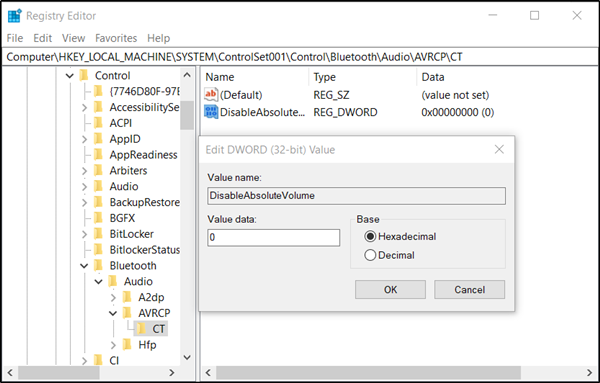

- WINDOWS VOLUME RESET HOW TO
- WINDOWS VOLUME RESET INSTALL
- WINDOWS VOLUME RESET DRIVERS
- WINDOWS VOLUME RESET UPDATE
- WINDOWS VOLUME RESET SOFTWARE
When it restarted it showed that the audio the whole time was lowered by 50%, and even though this bull*** keeps automatically lowering whatever device I plug into, now it doesn’t affect me much since I’m now able to dramatically increase the volume. You will need to restart the computer when its finished.
WINDOWS VOLUME RESET DRIVERS
Then it’ll start downloading and updating the drivers for the laptop speakers. I have browsed these forums, disabling audio enhancements did not work. Regardless of what I change the volume for Teams to, it will default back to 100 for every new call. Go to the “Controller” tab and Click “Update Controller” and just search automatically for the update.ĥ. The second headset is set as default communications device, and in the advanced sound options -> app volume and device preferences, the default device is the second headset. On the “General” tab go to “Controller Information” and click Properties againĤ. In Windows 11, go to Settings > Sound > Volume Mixer > Reset all volume and device settings to default. Anyways, what i did was:Ģ.go to the “Properties” of the laptop speakers (Mine is ConexantSmart Studio HD)ģ. I started having this issue as soon as I updated to Win10, and the solutions I was trying never worked for me (All the ones that have been listed earlier by other users) I already had the DO nothing”, and i had disabled all enhancements. Try using another port or alternate speaker for sound issues. Yes, many users who have external speakers experience volume fluctuations. Either way, several users have reported that the volume settings revert whenever restarting an app. You can either turn it back to u0022Do Nothingu0022 every time you open an app, or you can select the option to reduce the volume by 50% to lessen the impact. My setting keeps going back to 80%, what can I do?
WINDOWS VOLUME RESET UPDATE
Windows users can uninstall updates by visiting the “Updates & Security” tab, then clicking on “View Update History.” Uninstall updates – Many users have reported audio issues after updates.Update your audio drivers – Head over to the task manager and navigate to the “Audio inputs and outputs section.
WINDOWS VOLUME RESET INSTALL
Install any updates and restart your computer to see if the volume problems cease. Check for any new system updates – Patches can fix a plethora of wonky computer issues.Double-click on the microphone option to open its properties. In the Control Panel window, locate Sound (if it opens in Large icons) and click on it. Use an approved duster or clean cloth to remove any contaminants from your keyboard. Type control (no quotes) and select the Control Panel from the results. Next, right-click on the affected audio device and choose Update Driver.

It will show the list of audio devices installed on your system. In the Device Manager, expand the Sound, video, and game controllers section.
WINDOWS VOLUME RESET HOW TO
How to Manually Clear or Set Dirty Bit on Windows Volume? If you want to edit the dirty bit for a system volume currently in use, you need to use a WinPE bootable CD to boot off your PC.
WINDOWS VOLUME RESET SOFTWARE
The procedure requires you to use a disk editor software such as WinHex. In this tutorial we’ll show you how to manually clear or set the dirty bit for a NTFS & FAT32 volume in Windows 10, 8, 7, Vista and XP. You can run the chkntfs command at the Command Prompt to check if a volume is dirty, but there is no way to clear the dirty bit unless you let Windows go through disk scanning at boot. When a dirty bit is set on a volume, Windows automatically performs a disk checking the next time the computer is restarted.


 0 kommentar(er)
0 kommentar(er)
